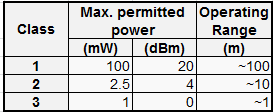Hi,
I am in the process of evaluating components for a product that requires WiFi, GNSS, Bluetooth, and Bluetooth Smart.
The WL1837MOD looks promising. It does not give us GNSS but may satisfy the remaining needs.
If Class 1 power is required (100 mW) for a Bluetooth Classic connection is this strictly a hardware issue or must the stack support it in some way? What will be required to use the module and achieve Class 1 performance?
What are the limitations on the number of connections? Our requirements may be such that we must produce BT Smart notifications, while maintaining a varying number of Class 1 and Class 2 connections.
Perhaps some or all of this happens at higher levels in the stack and the question is reduced to can you simultaneously use Wifi, BT Smart, Class 1 BT, and Class 3 BT?
Many thanks,
Kenny


